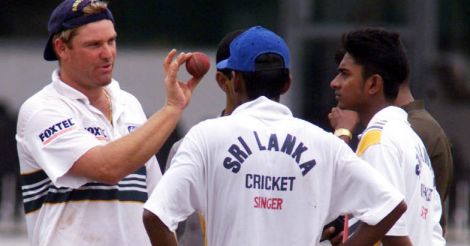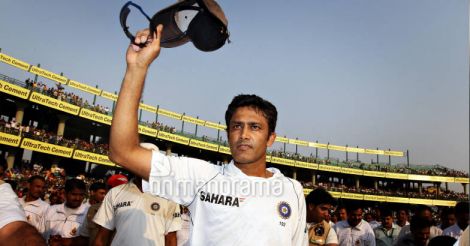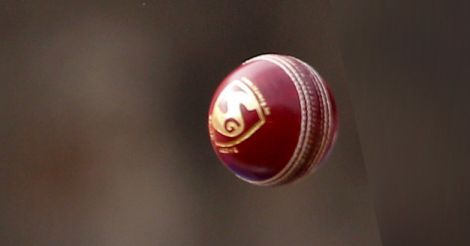Every sporting endeavor invariably has a component that is more difficult and challenging than the rest. Only those who are specially talented or exceedingly hard working would take upon themselves to venture into such areas. Persons who succeed in gaining proficiency over such formidable fields attain greatness and get acknowledged as legends of the game.
When it comes to cricket, leg-spin bowling has always remained the art most difficult to master. A leg spinner bowls the ball that turns it from his right side to left using spin imparted by the wrist. Thus, for a right-hand batsman, the ball would turn from his leg stump towards the off. The difficulty involved is caused by the use of the wrist to spin the ball, which is done from behind the shoulder in the bowling stride, due to which there exists a high chance that the ball would land at a spot where the batsman would find it easy to hit it to the boundary. Hence a leg spinner would need to put in long hours of practice at the nets to ensure that he gets the ball to pitch exactly where he wishes it to land and gets the right amount of spin on it.
However what makes a leg spinner a feared and dangerous customer for the batsman is the variety that he brings into his trade. All good leg spinners learn to bowl the googly, which is essentially a ball that spins in the opposite direction, that is from the off stump to the leg, but is delivered with the same bowling action as the leg spin. Similarly, they also develop a flipper, a ball that hurries through straight after pitching. Thus, a good leg spinner would have an armory consisting of googly and flipper in addition to the leg break, all delivered with the same bowling action, which makes him an unpredictable and tough opponent.
 When it comes to cricket, leg-spin bowling has always remained the art most difficult to master.
When it comes to cricket, leg-spin bowling has always remained the art most difficult to master. The very nature of the craft, which requires long hours of practice, deters aspiring cricketers from taking up bowling leg spin. Further, one essential ingredient for the success of leg spinners is the need to have the complete faith and confidence of their captain. Unlike other bowlers, who can be expected to keep the batsmen quiet by bowling in a restrictive manner, a leg spinner has the tendency to leak runs. Either he would take wickets, once he gets into his stride, or leak runs if it is not his day; there is usually no middle path for him. Moreover, a captain would need to be patient with him by giving him the field placings that he wants and also stand by him even when he gets the stick occasionally. A skipper in a hurry would tend to place pressure on a leg spinner which may not be conducive for getting the best results from him.
The history of leg-spin bowling shows that legendary leg spinners have traditionally hailed only from the India subcontinent and Australia. England’s contribution to this art is limited to Bernard Bosanquet, who is credited with having discovered the googly, but he played only in seven Test matches. Clarrie Grimmett of Australia was the first leg spin and googly bowler to make an impression in international cricket. Playing during the inter-war years, he picked up 216 wickets in 37 Test matches, also becoming the first bowler to take more than 200 wickets in Test matches.
The first Indian leg spinner to make his mark was Subhash Gupte, who led the Indian attack during the 1950s. No less a person than Gary Sobers felt that Gupte was the best leg spinner ever. But Gupte was eclipsed by the arrival of Bhagavat Chandrasekhar in the Indian national squad in 1964. Bowling with a right arm that was crippled by an attack of polio, Chandra, as he was popularly called, was an unorthodox leg spinner cast in the match winner mold. He possessed a deadly flipper and a googly that was virtually unplayable as it was bowled at close to the medium pace.
 Shane Warne was a colorful Aussie who bowled like a classic leg spinner - flighting the ball, extracting a huge amount of turn, and possessing a large variety of wicket taking deliveries.Getty images
Shane Warne was a colorful Aussie who bowled like a classic leg spinner - flighting the ball, extracting a huge amount of turn, and possessing a large variety of wicket taking deliveries.Getty imagesHe was instrumental in India winning their first ever Test match in England at Oval in 1971, when he ran through the batting line-up of the hosts, taking 6 wickets for 38 runs in the second innings. He also played an important role in all Indian victories of the 1960s and 1970s, the most notable being when he picked up 12 wickets at Melbourne in 1977 to help defeat Australia.
After the departure of Chandra from international cricket, Abdul Qadir emerged from Pakistan. Despite his odd bowling action, Qadir was a leg spinner in the classic mold, who was willing to toss the ball up in the air and lure the batsmen into making mistakes with subtle variations of length, line, and turn. He was hugely successful against England, against which he bowled one of the finest spells of leg-spin bowling in a Test match when he picked up 9 wickets in an innings in 1987. Qadir was also the first leg spinner to break the glass ceiling and find a permanent place in the limited overs’ squad of his country.
When the 1990s dawned, Test cricket had started yielding space to limited overs' version of the game. The laws and playing conditions started shifting in favor of the batsmen over the bowlers, as administrators realized that crowds who watched the matches wanted more runs being scored than wickets being taken. Along with this came restrictions on the bowlers from the number of overs a bowler could bowl to field placements to intimidatory bowling etc, thus transferring the primary job of a bowler from taking wickets to restricting the batsmen from scoring runs. It appeared that leg-spin bowling, which was essentially aimed at taking wickets, would be one of the first casualties of this shift.
Warne and Kumble
However, to the pleasant surprise of all cricket lovers, two brilliant leg spinners emerged on the scene and strode it like a colossus during the next two decades. Apart from the fact that they were essentially leg spin and googly bowlers, Shane Warne and Anil Kumble were as different as chalk and cheese. Warne was a colorful Aussie who bowled like a classic leg spinner - flighting the ball, extracting a huge amount of turn, and possessing a large variety of wicket taking deliveries.
 Anil Kumble
Anil KumbleKumble was the serious and brainy kind who bowled at a faster pace and was virtually unplayable on tracks helpful to him. Thus, while Warne took his wickets in a variety of pitches all over the world, Kumble was at his best in the Indian subcontinent. Warne was also a player who performed at his best on the big stage as could be evidenced by his excellent performances in semifinals and finals of the World Cup. Kumble led India for almost two years while Warne, despite possessing a brilliant cricketing brain, was denied the chance to captain his country because of his indiscretions outside the cricket field. Both these legends retired from the game towards the end of the first decade of this century.
Thus, it can be seen that the flag of the beautiful art of leg-spin bowling has been kept flying through the whole of the past century by these masters who took it upon themselves to practice and attain perfection in this demanding craft. Their performances popularized this form of bowling and inspired many youngsters to follow in their footsteps. To the cricket lovers of the present generation, there cannot be a sight more beautiful or exciting than the one of Warne matching his wits with Sachin Tendulkar. Similarly, fans of the game during earlier times were fortunate to witness Grimmett bowling to Walter Hammond, Gupte trying his wares against Sobers, Chandrasekhar testing the defense of Neil Harvey and Qadir attempting to shackle the aggression of Viv Richards.
It is high time that a new leg spinning sensation emerged on the cricketing horizon to carry forward the legacy of these champion performers. The art of leg spin bowling is too precious and beautiful to be allowed to wither away.
(The author is a former international umpire and a senior bureaucrat)

























